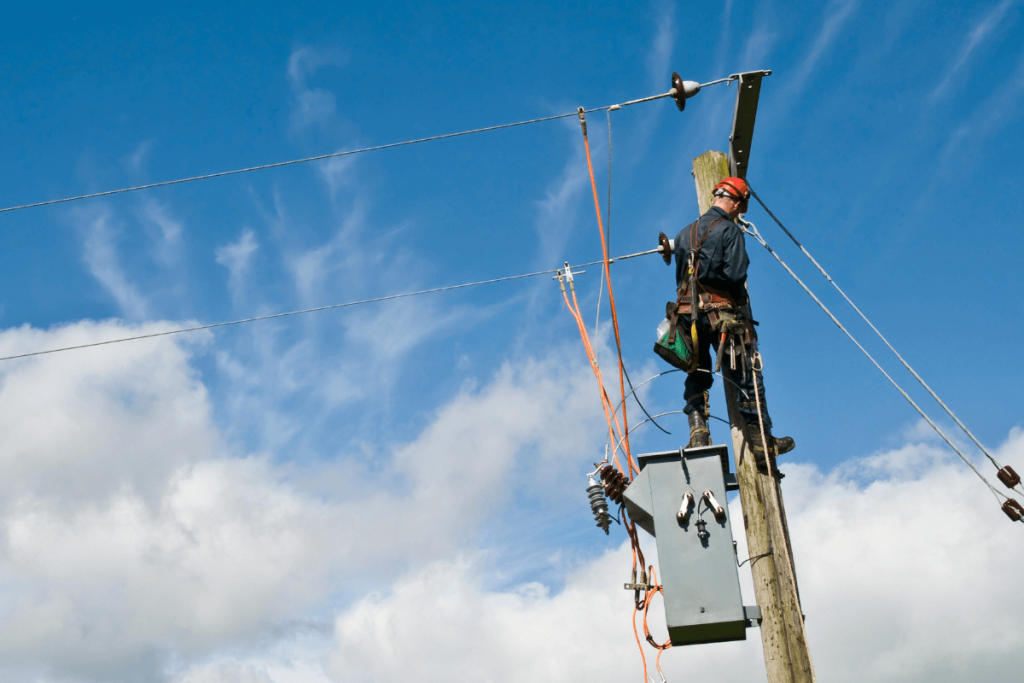Utility workers perform jobs that are critical to keeping our society functioning. From keeping electricity running to every home, office, and commercial property to ensuring water flows safely through pipes throughout our cities, the daily labor of utility workers keeps the country from grinding to a halt. This line of work, while essential to our infrastructure, can be incredibly dangerous. There are many hazards that each worker faces on a daily basis that can cause serious injuries or even death. Utility companies must have safety policies and procedures in place to protect their workers and keep them safe from the inherent dangers of their line of work.
What are the hazards?
There are many common hazards associated with utility work that workers must be prepared for. Many utility workers have to perform their jobs in the pouring rain, the dark of night, underground, at great heights, or in the middle of the street. Utility workers often find themselves working in unstable environments outside of their control as the weather can quickly change and cause a hazardous situation. Failure to identify hazards while working can quickly lead to devastating consequences.
Some of the common hazards utility workers face include:
- Electrical shocks – One of the greatest hazards for utility workers is electric shock. This is especially true for those working for a power company. Working with dangerous power lines takes skill and incredible attention to detail, as even the slightest distraction can result in a painful injury or even death.
- Slips, trips, and falls – All jobs in America have the risk of injury due to a slips, trips, and falls. The unstable conditions utility workers often find themselves in make these sorts of accidents occur frequently. Injuries can range from minor sprains, strains, and fractures to broken bones, traumatic brain injuries, and spinal cord injuries.
- Working from heights – Utility workers often use tall ladders, large cranes, and even climbing gear to reach poles and power lines. Working from a great height is always a high-risk endeavor. Falling off a ladder, crane, or power pole can cause serious injuries and could kill or disable a worker permanently.
- Collapses and falling items – A lot of utility work is done underground, especially when working on pipelines or streets. If a part of the street is unstable and collapses, the utility worker could be crushed or trapped underground. They may also work below other utility workers and could be struck by falling debris or tools.
- Burns and explosions – Utility workers often work with hazardous chemicals and building materials, electrical lines and equipment, and gas pipes. In each of these situations, if an item or chemical catches on fire, is splashed on a worker’s skin, or explodes, workers can be seriously injured and permanently scarred.
These are not the only hazards that utility workers face as many different utilities are in a variety of environments. Recognizing the dangers associated with daily tasks is essential to avoiding serious injuries.
How Can Utility Workers Stay Safe?
Safety procedures and policies are critical to keeping utility workers safe in their work environment. All utility companies must provide proper safety training for their workers, provide well-maintained personal protective equipment (PPE), and follow all signage requirements for hazards in the workplace. There are also specific OSHA standards in play when it comes to utility work.
The relevant OSHA standards that must be met in the utilities industry include:
- Electrical General Requirements (1910.303)
- Electrical Wiring Methods (1910.305)
- Electric Power Generation, Transmission, and Distribution (1910.269)
- Personal Protective Equipment, Subpart I (1910)
- Fall Protection (1926.501)
- Hazard Communication (1910.1200)
- Respiratory Protection (1910.134)
- Lockout/Tagout (1910.147)
Utility companies cannot cut corners when it comes to safety. OSHA requires employers to make sure their employees have undergone on-the-job training and can demonstrate the ability to perform duties safely at their level of training. If a specific job requires a ladder, the worker must be trained on ladder safety. If working with hazardous chemicals, fumes, dust particles, electricity, or anything that can harm a worker through inhalation or touch, the worker must know what PPE to wear to stay safe. When the above OSHA standards are followed and all employees are able to perform their jobs safely, workplace accidents can be avoided.
South Texas Utility Worker Accident Lawyers
The risk of being injured or killed as a utility worker is very high. If you are a utility worker who has been injured on-the-job, you may be searching for legal counsel to help. With the right legal team behind you, you may be able to obtain the financial compensation you need to cover your medical bills, lost wages, and pain and suffering from your workplace accident. You may also be entitled to punitive damages if the court believes your accident is the result of your employer’s gross negligence. We know that you are hurting and do not want to be a financial burden to your family. If you or a loved one has been injured while working for a utility company, contact the Rio Grande Valley workplace accident attorneys of Ezequiel Reyna Law Office today to discuss your case at no cost. There is limited time to act following a utility work accident in Texas, so don’t delay.










